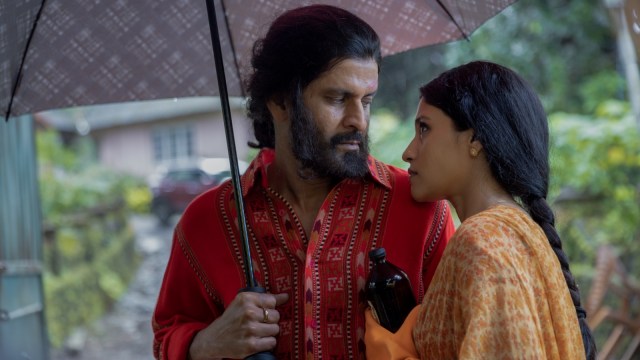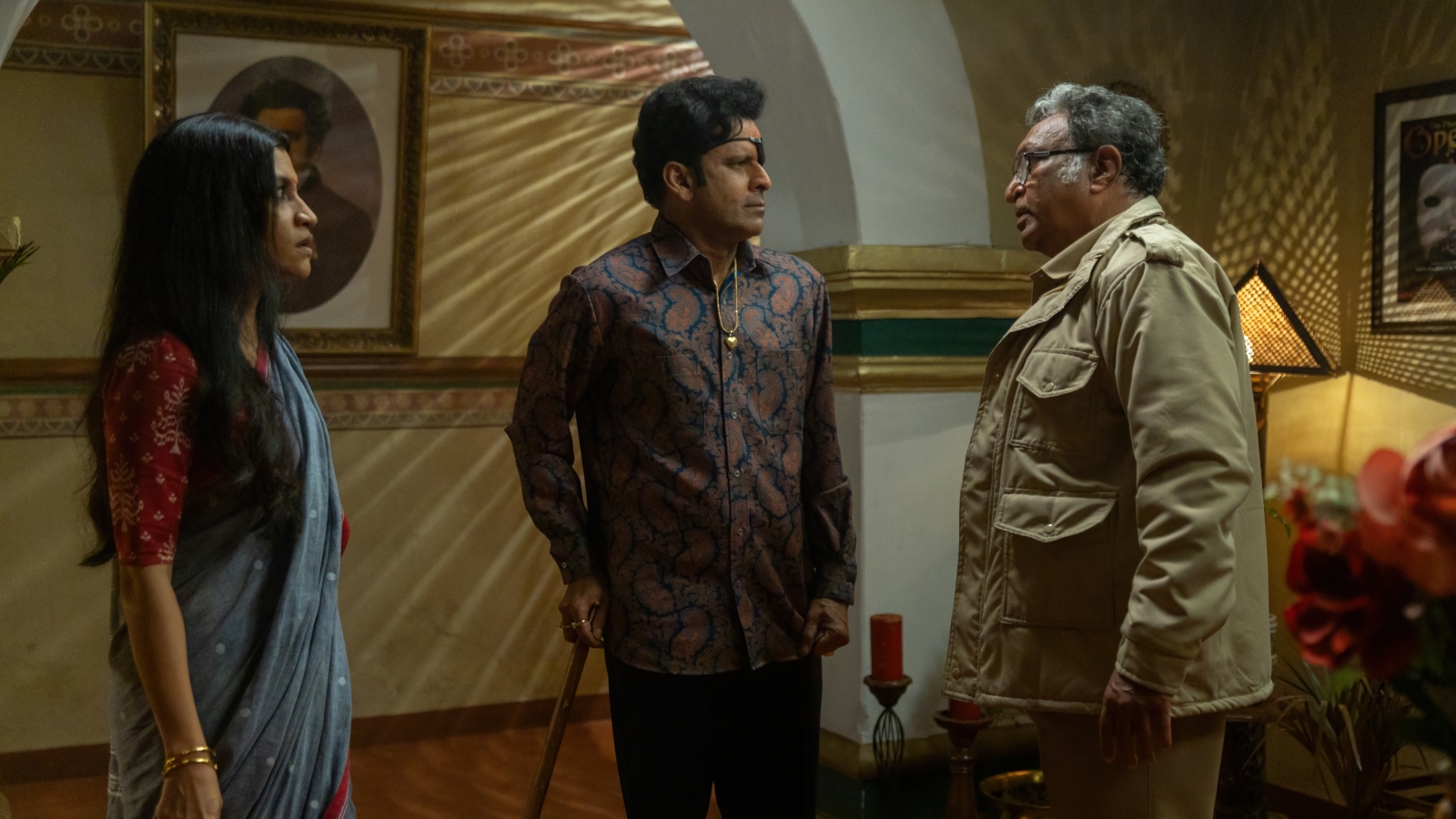Manoj Bajpayee, Konkona Sen interview: ‘When you push the boundary, new and interesting ideas emerge’
Prominent actors Manoj Bajpayee and Konkona Sensharma, who acted together for the first time for Netflix series Killer Soup, talk about their collaboration, feeding off each other's energy and what they are curious to know about each other.
 Manoj Bajpayee and Konkona Sensharma's Killer Soup is streaming on Netflix.
Manoj Bajpayee and Konkona Sensharma's Killer Soup is streaming on Netflix. Netflix series Killer Soup brings Manoj Bajpayee and Konkona Sensharma together on screen for the first time. What made you both gravitate towards this bizarre, dark series?
Konkona Sensharma: There was no reason not to do this project – it’s a great role. It was an opportunity to work with director Abhishek Chaubey and Manoj Bajpayee. It is a crazy, amazing, fun story.
Manoj Bajpayee: Prior to this, no one ever approached us to act together. We love to team up with good actors, who know their mind and craft. The performances of their co-actors compel them to better themselves. Irrfan (Khan) too used to complain about it. He used to say: ‘Why is no one casting us together?’ So did Kay Kay Menon.
Take us through the initial days of preparing for your roles.
KS: I used to get the script by mail, episode-wise. When I read them, I used to wonder what Abhishek and the writers were thinking. Abhishek had told me that they would keep my character Swathi Shetty’s background vague without giving out specific details about her past life.
MB: I was told to make the character of Prabhakar, one of my characters, as uncouth as possible; make him look dirty. Abhishek had given me details of his background and how Prabhakar remained a loser even though he used to be good in studies. How he became an opportunist, misogynist and womaniser.
KS: I used to get into a bad mood when Manoj used to come to the sets as Prabhakar – talking loudly, burping.
Also read | Killer Soup review: Manoj Bajpayee, Konkona Sensharma serve a bland broth
Manoj, how was it playing double roles for the first time on screen?
MB: In cinema, it is far easier since so many other technical departments are involved. In theatre, when you have to do a double role, it becomes demanding. What’s challenging here was that if I got too into Prabhakar’s character in the first half, I had to play Umesh in the afternoon. I found a way around it – I made notes about my characters, read them as much as possible, created their arcs, and kept their back story in mind. This also meant collaborating with the director and finding the right pitch for the scene we were going to shoot.
Konkona, you play the role of a highly complex and ambitious woman.
KS: We used to call her ‘Swathi Shady’. I was happy to play ‘a shady lady’. Swathi is done with the domestic chapter of her life. After being a nurse, she married a Shetty and climbed up the social ladder. Her son is now a grown-up. In her 40s, she wants to do something for herself. This is something many women will relate to. She wants to open her restaurant and make the best paya soup in the world. She steadfastly sticks to this dream from the first episode to the last even when many things go wrong. But she tries to come up with solutions all the time.
 A still from Killer Soup.
A still from Killer Soup.
Both of you play unusual characters. Do you believe that writing for shows has become better today?
KS: Not uniformly and consistently, but in some areas, there has been remarkable writing. It is important to do projects that are not just mainstream or conventional. In the mainstream, you are often repeating something that has worked. I have no complaints regarding that. Sometimes, when you are pushing the boundary, new and interesting ideas emerge. For instance, Aamis (2019). What an unusual love story. It is done engagingly and subtly.
MB: If you look at last year, there were interesting series like Jubilee, Kohrra which showcased great writing and performances. I have been part of some great projects whose directors are in their 30s. That’s great for the future.
Were you feeding off each other’s energy during the shoot?
MB: When we were doing a scene together, I was depending heavily on Konkona’s pitch and action. That’s the beauty of working with great actors. Even if you are confused about your own response, you know it would work out. It happens subconsciously.
KS: As Naseeruddin Shah has said, ‘acting is also reacting’. Also, we had the scenes, which were written so much in detail, guiding us.
On the sets, were you both very serious?
MB: Konkona was. This is something everyone should learn from her. She goes on rehearsing till the lines are part of her system. I get it that Hindi is not her first language and that’s why she was extra careful.
KS: If there are long lines, I like to keep saying them. Manoj teases me about it. Now, you do a Bengali film and I won’t help you with the lines.
How about working in a Bengali movie directed by Konkona?
MB: I would love to. When I watched A Death in Gunj (2016) directed by her, I was like wow. I can’t get the first shot of the vintage car out of my mind. That’s the beauty of a good film. Even The Mirror (which is part of the Lust Stories 2) is so well crafted.
What would you like to know about each other’s approach and process?
KS: I would like to know if Manoj takes the same approach for each character he plays or if it varies.
MB: The only thing common is that I keep on reading the script. At times, I don’t even take notes. I write down two-three essential things that I should not leave out while doing the scenes. Rest of the method varies. For instance in Aligarh (2015), I thought of taking help from the atmosphere of literature and let that help me get into the character. I love the process more than the real work. I also believe an actor’s performance is determined by his/her interpretation of the character.
Manoj, what would you like about Konkona’s craft?
MB: When is the time for you to switch from being an actor to writer-director? I can’t even read a book when I am immersed in playing a character. It is remarkable how Konkona, during our shoot, was talking about the next (The Mirror) that she is planning to direct.
KS: I love to read books on the sets. Reading, I find, is an effective way to keep my mind neutral. As an actor, it is important for me to keep Konkona at bay. When I have an intense scene or long lines, then I can’t do anything else. However, on days when I am not stressed out, I can concentrate on reading a book or chatting with my co-actors.
What would it take for both of you to do another project together?
KS: I’m ready.
MB: If it’s Konkona’s direction, I’m there.
Photos





- 01
- 02
- 03
- 04
- 05


























